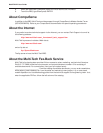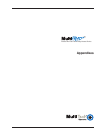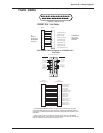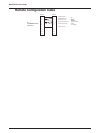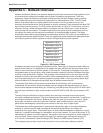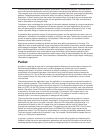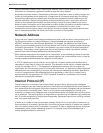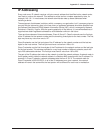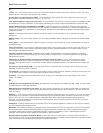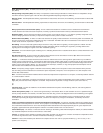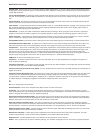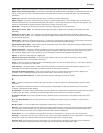
68
MultiFRAD II User Guide
different destination address, and in some cases, different sizes. A typical packet holds 512 bytes of
information, so it takes many packets to transfer a large file over a network.
As packets traverse a network, the addressing information contained in them is used by bridges and
routers to direct packets to their destination, or keep them off of networks where they don't belong.
Routers direct packets along a specific path that has been predetermined as the best route to the
packets' destination. Routers use algorithms to determine efficient paths in conjunction with other
routers on the network. Administrators can also manually configure routers, based on the cost or
speed of routes. Information can be transmitted to another system using either connection-oriented
or connection-less methods. A connection-less session is more efficient for short, bursty
transmissions since a session setup is not required, but the end system may need to perform more
work to resequence packets that arrive out of order and check for lost packets.
Network Address
Every node on a network has an assigned address that other nodes use when communicating with it.
For Ethernet and token ring network adapters, unique addresses are assigned at the factory.
ARCNET networks have user-definable addresses. For example, the address of an Ethernet and
token ring network adapter consists of a 6-byte address, half of which is a special number identifying
the board's manufacturer. The last half of the address is a unique number for the board assigned at
the factory. This strategy virtually guarantees that no two Ethernet or token ring network interface
cards will ever have the same address and prevents conflicts.
When separate networks are connected into an internetwork, a new addressing scheme is required.
On interconnected NetWare networks, each network segment has its own address, which is used for
routing purposes and differentiate each segment from the others.
In TCP/IP networks such as the Internet, every node has a numeric address that identifies both a
network and a local host or node on the network. This address is written as four numbers separated
by dots, for example 148.1.9.1. The assignment of addresses is arbitrary within a company or
organization, but if the company plans to connect with the Internet, it is important to obtain registered
addresses from an outside agency to conform with international addressing standards. Applications
running in computers also have addresses that other applications, either local or remote, use to
communicate with the application. On TCP/IP networks, a socket is a combination of an Internet
address plus an application address.
Internet Protocol (IP)
Internet Protocol is a connection-less communication protocol that by itself provides a datagram
service. Datagrams are self-contained packets of information that are forwarded by routers based on
their address and the routing table information contained in the routers. Datagrams can be addressed
to a single node or to multiple nodes. There is no flow control, acknowledgment of receipt, error
checking, and sequencing. Datagrams may traverse different paths to the destination and thus arrive
out of sequence. The receiving station is responsible for resequencing and determining if packets are
lost. IP handles congestion by simple discarding packets. Resequencing and error handling are taken
care of by upper layer protocols.
IP works on a number of local and wide area networks. When IP runs in the LAN environment on an
Ethernet network, for example, the data field in the Ethernet frame holds the IP packet and a specific
field in the frame indicates that IP information is enclosed. IP uses an addressing scheme that works
independently of the network addressing scheme. For example, every Ethernet adapter has a
factory-assigned address for each node.



